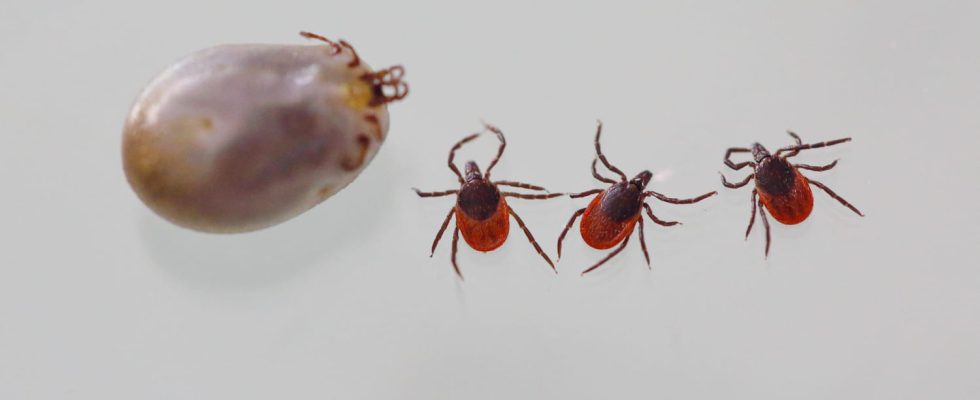In France, a team of scientists is tracking ticks to assess their spread. A giant species is closely followed because it carries a condition similar to Ebola.
Few people know of its existence, but this harmful insect is now present in France. The “giant tick” or “striped-legged” tick, from its name Hyalomma marginatum, has even been the subject of in-depth studies for several weeks, carried out by a team of scientists, coordinated by the Center for International Cooperation in Agricultural Research for Development (Cirad), in collaboration with the National Research Institute for Agriculture, Food and the Environment (Inrae).
These researchers are very interested in all populations of ticks, responsible for diseases for which humans and animals are at risk, including Lyme disease. Their work is now focusing on the new threat represented by this famous “giant tick”. Experts have in fact discovered that the species is a potential carrier of a disease that can be extremely dangerous, since it is to a certain extent comparable to Ebola, which has an average fatality rate of around 50%.

And CIRAD scientists are warning the authorities: they have established the presence of the Crimean-Congo Hemorrhagic Fever virus in giant ticks collected in the Eastern Pyrenees a few months ago. However, scientists have not identified any transmission of the disease from this tick to humans in France. But experts point to “a health risk for humans”, with potential transmission not being an excluded scenario.
The giant tick has “recently established itself on the French Mediterranean rim. This species, installed in the south and east of the region, does not go beyond open and dry habitats and is therefore rather limited to dry and dry areas. level of scrubland”, write Researchers. The spread of the parasite outside Occitanie and the departments of southern France is currently unlikely.
The “giant tick” is larger than its cousins (8 mm), it has a spur and two-colored legs on which we can see whitish rings at the joints. The “giant tick” is particularly tenacious, it is capable of pursuing its prey for several tens of meters and for 10 minutes. Furthermore, this species is apparently more resistant to repellents.
If present on the body, it must be removed with caution, but without delay because the risk of infection is, unlike the contraction of Lyme, immediate. It is recommended to use a tick remover, quickly disinfect the bite area and keep this area under observation for several weeks.
